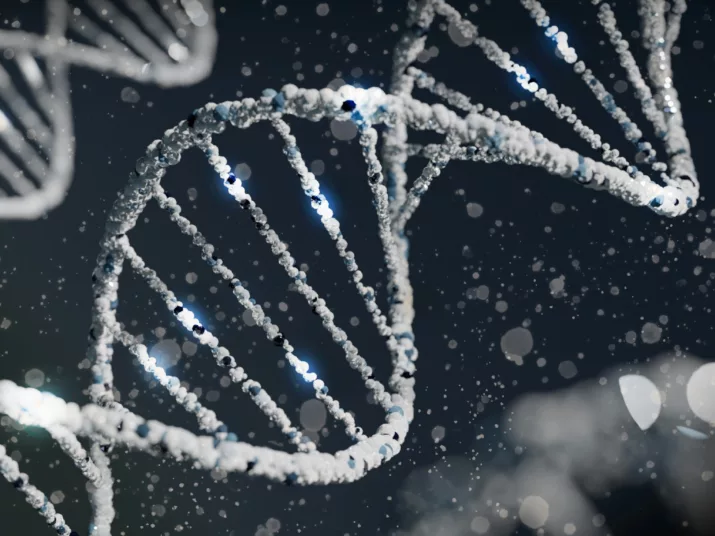
Credit: Sangharsh Lohakare via Unsplash
Genes – encrypted information
Understanding our bodies from within
The human body contains coded information, namely in the genes. Each gene consists of a vast number of building blocks, around 3.2 billion in total. In every person, they’re arranged slightly differently. If the genes change, this may lead, among other things, to illness.

Credit: Sangharsh Lohakare via Unsplash
Thanks to new technological possibilities, scientists have gained an ever more precise understanding of genes and everything connected to them. As a result, diseases and illnesses could be cured for the very first time or treated more precisely. But research is still far away from unlocking all the secrets. The inside of our bodies is complex: not all the processes taking place inside of us are determined by genes alone.
But what are genes, anyway? And what do the terms “DNA” or “genome” refer to?
Gene
Genes are segments on our DNA. We have around 21,000 genes. But they make up only a small part of the DNA, namely less than two per cent.
DNA
The DNA contains all hereditary information, for example our potential height or eye colour. The DNA as a whole plays an important role in determining how the genes work. But it’s not only the information within the DNA that’s so important. How we live and behave, the environment in which we live and sometimes even coincidences all play a role too.
A cell nucleus contains 46 DNA threads. They’re located in the vast majority of our cells and are stowed there in a particularly ingenious way. The DNA threads clump together tightly in the nucleus, without ever forming knots. They constantly change their shape to enable the cell to access the genes it needs at any one moment.
Graphic: Polygraph Design
The entirety of the 46 DNA threads is called the genome.
How do we receive our DNA?
Each person receives a randomly mixed half of their DNA from the mother and the other half from the father. That’s how we start in life. When you compare the DNA closely, no two persons are completely alike (even identical twins show differences if mutations occur in the early stages of development). Nevertheless, all human beings share a genome that is 99.9 per cent identical.
What do we need genes for?
Genes are like blueprints. The body constantly needs them to produce many different proteins. The latter perform many tasks, such as transmitting messages or transporting oxygen. However, each person’s blueprints look slightly different. We’re already born with most of these differences. Sometimes, however, a blueprint changes in the course of a person’s life. That can mean that the person gets sick. In many cases, however, one gene alone is not responsible for this. If a gene mutates, this may also have no effect whatsoever. Sometimes it may even have advantages.